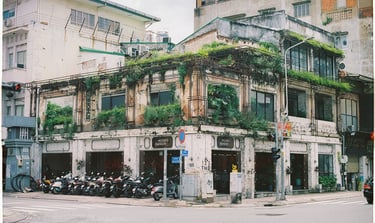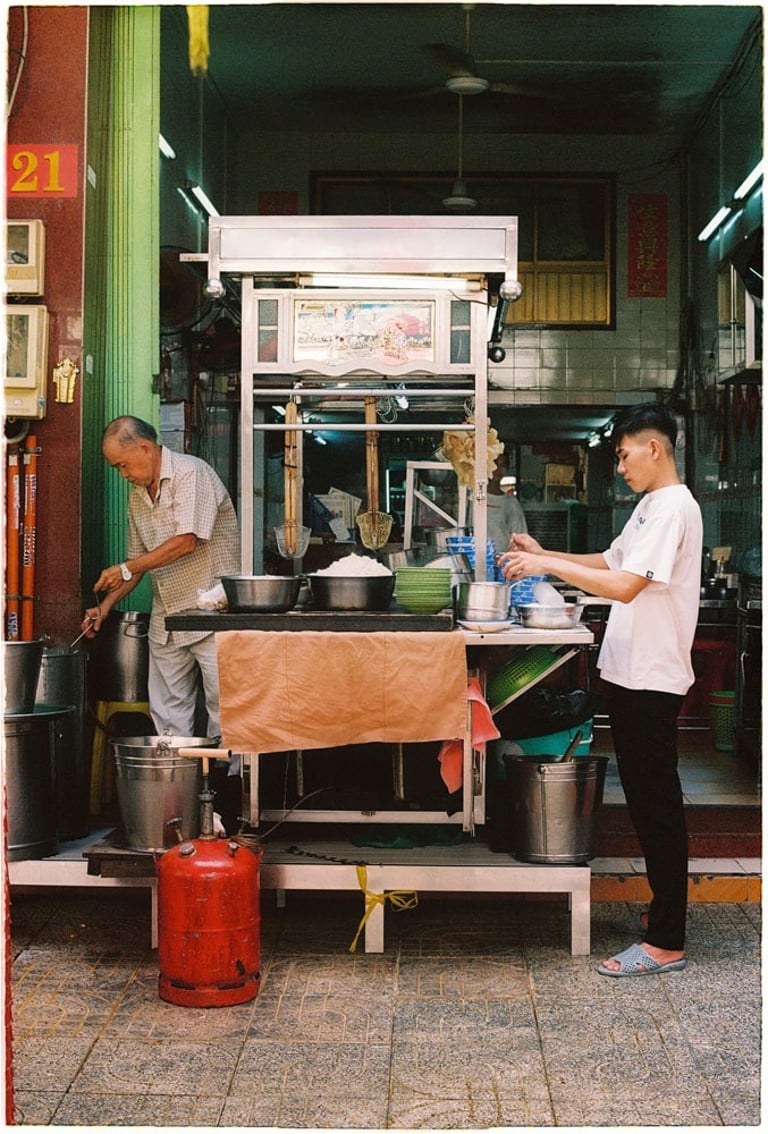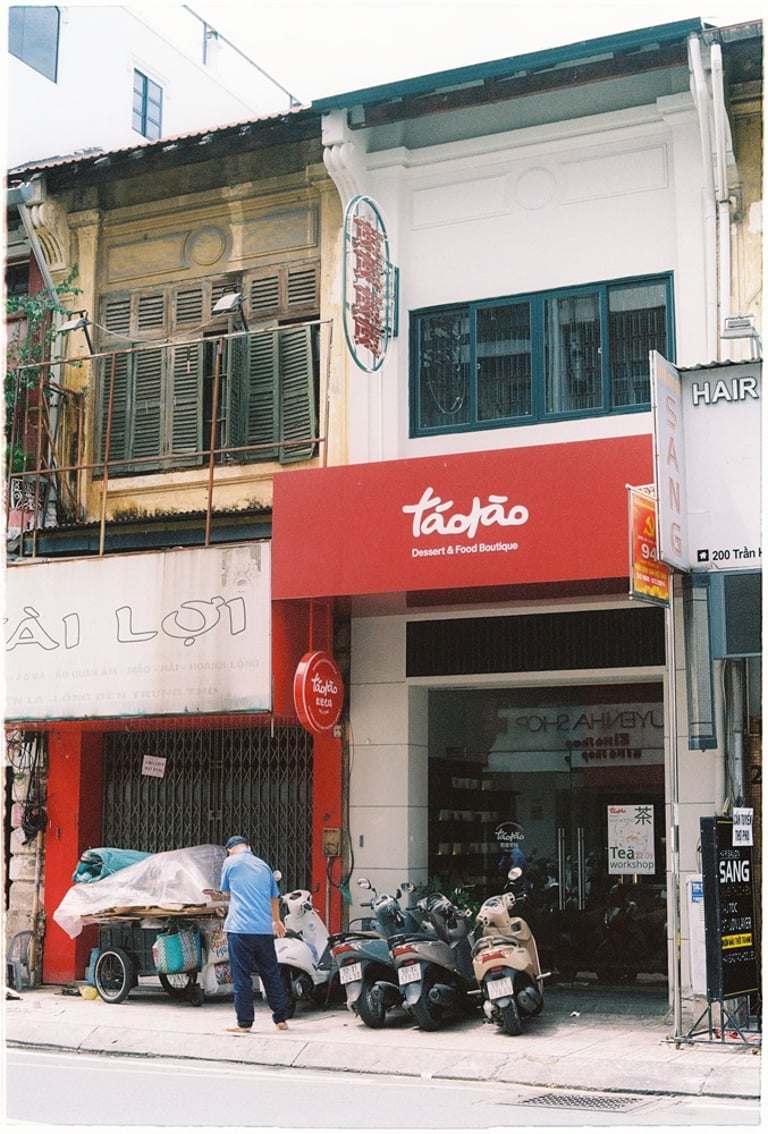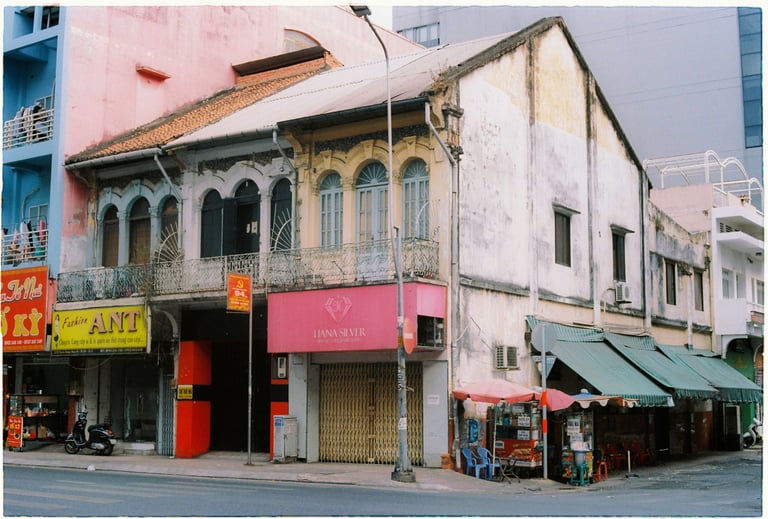All About Saigon's Chinatown
Cho Lon, or Saigon's Chinatown, is a cinematic district with a rich history dating back to the 18th century. It was originally founded by Chinese refugees and has since grown into a bustling hub of Chinese culture. The district offers a unique blend of Vietnamese and Chinese traditions, with its bustling markets, temples, pagodas, and historical sites.
EXPERIENCE FILM PHOTOGRAPHYTRAVELPHOTOWALK
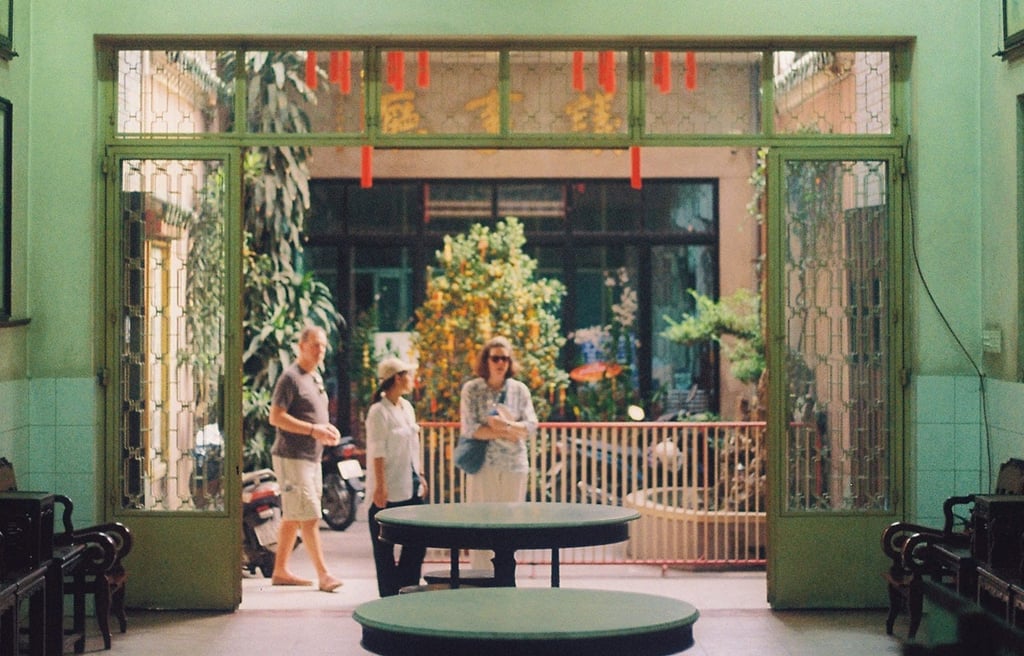

So, What Saigon On Film Knows About Chinatown (Cho Lon):
History Of Cho Lon
Chinatown Today
How To Get To Saigon Chinatown
Pagodas And Churches Of Distinct 5 (Another Name For Chinatown)
Shops And Markets Of Saigon's Chinatown
Where To Eat In District 5
3 Tours To Chinatown
Capturing Cho Lon: Saigon On Film Photo Walks Around Chinatown
3 Hotels To Stay In District 5
Self-Guided Chinatown Walking Tour
Chinatown Map
Useful Links To Learn More About Saigon's Chinatown
Before You Delve Into Our Longread About Saigon Chinatown, Here Is Some Shortcuts:


Discover Saigon's Chinatown Together with Saigon On Film
Join us for a journey through Saigon's most authentic neighborhood. Once a separate city called Cho Lon, this historic Chinatown remains largely untouched by mass tourism. Perfect for travelers seeking genuine cultural immersion combined with hands-on photography experience.
Sunday Walking Tour In Saigon Chinatown
Q&A About Saigon Chinatown
Is Chinatown in Saigon worth visiting?
The Chinatown in Saigon is a cool place to check out. It's got a long history and it's the biggest Chinatown you'll ever see! The pagodas and markets are still the same as they were years ago, so you can really get a feel for what life was like back then. And since it's not super touristy, you'll get to see it almost untouched.
What are main streets of Saigon Chinatown?
The main drag of Saigon Chinatown is Trần Hưng Đạo, but this area is huge, so you should also check out Hải Thượng Lãn Ông and Châu Văn Liêm streets. And don't forget the parallel streets too!
How big is Saigon Chinatown?
Saigon's Chinatown, known as Cho Lon, is a vibrant and bustling district that spans across parts of District 5 and 6 in Ho Chi Minh City. With its rich history and unique cultural blend, Cho Lon offers a fascinating glimpse into the city's diverse heritage. Once a separate city in its own right, Cho Lon has a long-standing connection to the Chinese community. Over centuries, Chinese immigrants flocked to the area, bringing their traditions, languages, and businesses. This influx transformed Cho Lon into a thriving commercial hub, characterized by its bustling markets, ornate temples, and traditional Chinese architecture.
Is Chinatown in Saigon safe?
Sure, Chinatown in Saigon is totally safe. Just like the rest of the city, you can stroll around without a worry. But hey, it's always a good idea to keep an eye on your stuff.
What is the best time to visit Chinatown in Saigon?
The best time to check out Chinatown in Saigon is either super early in the morning to catch the market hustle and bustle before it gets too hot, or after lunch when the sun isn't so intense and the shops are gearing up for the evening crowd. But if you really want the full experience, try to visit during Chinese New Year. The decorations and festive atmosphere are totally worth it!
Is Saigon Chinatown and Cho Lon the same place?
Saigon Chinatown and Cho Lon are basically the same place. Cho Lon was the official name when it was its own city, but now it’s just part of Ho Chi Minh City.
Saigon's Chinatown (Cho Lon) History
Cho Lon, a vibrant hub of Chinese culture in Ho Chi Minh City, Vietnam, has a rich history dating back over two centuries. Originally a small settlement founded by Chinese refugees in the late 18th century, Cho Lon grew to become a bustling city in its own right before merging with Saigon in the 1930s. Today, it remains an integral part of the city's identity, offering a unique blend of Vietnamese and Chinese traditions.
The name "Cho Lon" translates to "Big Market" in Vietnamese. Its original Cantonese name, "Tai-Ngon," and Mandarin equivalent, "Di'an," both mean "embankment." This name reflects the settlement's strategic location along the river, where Chinese refugees sought refuge and established their community.
The first Chinese settlement in the area was Minh Huong village. In the late 18th century, Hoa people from Pho Islet (Bien Hoa) fled the Tay Son massacre and sought refuge in Cho Lon. They built high embankments to protect themselves from the river's currents and named the new land "Tai-Ngon."
The Origins of Cho Lon, Saigon
City Within a City
As Cho Lon grew, it developed into a thriving city with its own distinct culture. Chinese immigrants brought their traditions, languages, and customs, creating a vibrant community that stood out from the surrounding Vietnamese villages. The city's bustling markets, temples, and pagodas were a testament to its unique identity.
During the Vietnam War, Cho Lon played a significant role as a black market where soldiers and deserters traded American goods. This illicit activity contributed to the city's reputation as a vibrant and dynamic place.
The Merger with Saigon
In the 1930s, Cho Lon merged with Saigon to form the new city of Saigon-Cho Lon. This merger marked a significant turning point in the history of both cities. While Cho Lon retained its distinct character, it became an integral part of the larger metropolitan area.
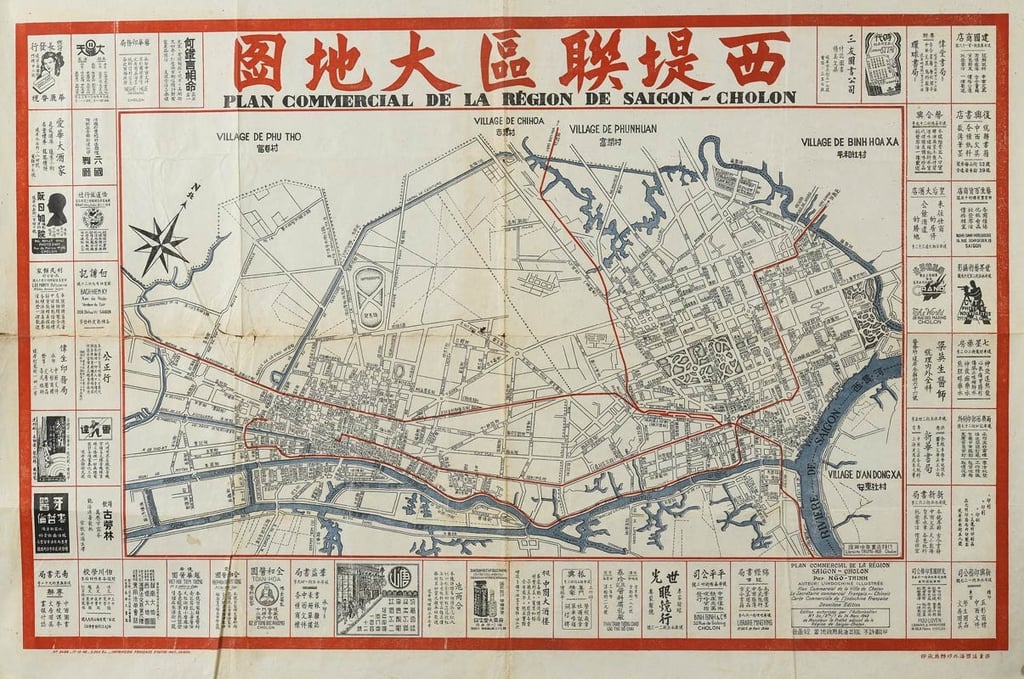

What is Saigon’s Chinatown Today?
Saigon's Chinatown Cho Lon today offers a nostalgic glimpse into the past. The air is filled with the fragrant aroma of traditional Chinese herbs, creating an unforgettable atmosphere. Local vendors, living at a slower pace than their counterparts in District 1, take their time and enjoy the leisurely rhythm of life. Beyond the delectable food and beverage options, Saigon's Chinatown boasts a unique charm that's hard to find elsewhere in the city. You can discover hidden gems like regular bird lovers' meetings, where enthusiasts gather to share their feathered friends and engage in lively conversations. It's a place where the old and the new coexist harmoniously, making Saigon's Chinatown a truly special destination.

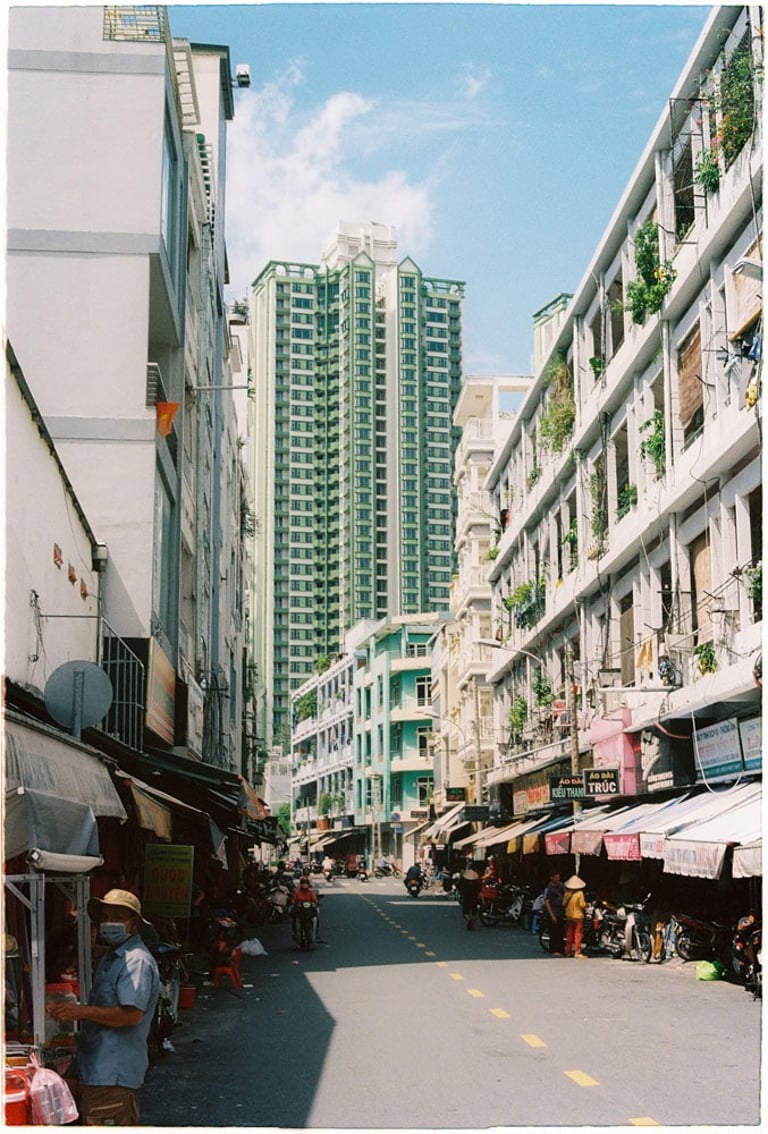


How To Get To Saigon Chinatown
Here are three ways to get to Saigon Chinatown:
Grab a taxi or motorbike:
This is the easiest and most convenient way to get to Chinatown. You can use a popular booking app or grab a taxi on the street, just tell the driver one of the destinations of Cho Lon (Saigon Chinatown) The fare will be around 60,000-150,000 VND, depending on the service you choose.
Hop on a tour bus:
If you want to enjoy the sights and sounds of the city on your way to Chinatown, you can take a double-decker tour bus. Just make sure you remember the bus schedule. The fare for the trip will be around 200,000-250,000 VND.
Take a public bus:
For a more adventurous experience, you can take a public bus to Chinatown. It's a great way to see how the locals live and get a feel for the city. The fare will be only 5,000-15,000 VND, depending on the stop you choose. Saigon buses have air conditioning and drive pretty fast, so it's a comfortable ride. The only disadvantage is that it can be difficult to communicate with the driver if you don't speak Vietnamese. If you choose this option, it's best to show the driver the name of the stop you want to go to. The most popular route to Chinatown is number 01, which you can check on the public bus route website.
Pagodas and Churches of Saigon's Chinatown
Saigon's Chinatown, or Cho Lon, is a vibrant melting pot of cultures, where Chinese traditions and Vietnamese influences intertwine. A stroll through its bustling streets reveals a fascinating tapestry of pagodas, churches, and historical sites that offer a glimpse into the rich heritage of this vibrant district.
Syncretic Sanctuary: Quan Am Pagoda
Quan Am Pagoda, built in 1816 by local merchants, is a testament to the syncretic nature of Vietnamese pagodas. While the main deity is Guan Yin, the Mahayana Buddhist goddess of compassion, the pagoda also houses shrines dedicated to the Amithaba Buddha, various Buddhist Bodhisattvas, the Taoist Jade Emperor, and even Mazu, a Chinese sea goddess revered by the Fujianese community. This eclectic mix reflects the diverse beliefs of the Chinese immigrants who settled in Cholon.
Place of Historical Significance: Phước An Hội Quán Pagoda
Phuoc An Hoi Quan Pagoda, built in 1902, is dedicated to Quan Cong, a Chinese historical figure who never set foot in Vietnam. This unique dedication highlights the enduring influence of Chinese traditions on the local community. Quan Cong, a military commander during the Three Kingdoms period, is revered for his honesty and valor. The pagoda also features a statue of Quan Cong's horse, believed to bring good fortune to those embarking on long or difficult journeys.
French Colonial Gem: St. Francis Xavier Parish Church
St. Francis Xavier Parish Church, also known as "Cha Tham," is a beautiful example of French colonial architecture. While it may not be as well-known as the Notre Dame Cathedral, it holds historical significance as the place where South Vietnamese President Ngo Dinh Diem took refuge after the bombing of the presidential palace.
Chùa Ông Bổn Pagoda
Chua Ong Bon Pagoda, dedicated to Ong Bon, the god of wealth and virtue, is a quieter and less touristy option compared to other pagodas in Cholon. This pagoda, built by the Fujian Chinese after World War II, offers a peaceful respite from the bustling city.
The Heart of Cho Lon: Thien Hau Pagoda
Thien Hau Pagoda, considered the main attraction of Cho Lon, is dedicated to Mazu, the sea goddess. This impressive pagoda, built by the Cantonese community in the early 19th century, is renowned for its intricate carvings, thousands of paper strips with written prayers, and the thick cloud of incense smoke that fills the air.
Nghia An Hoi Quan Pagoda, while smaller and less crowded than Thien Hau Pagoda, offers a unique tribute to Nghia An, the horse groom of Quan Cong. This pagoda also houses shrines dedicated to other deities, including Ong Bon and the Jade Emperor.
Saigon's Chinatown offers a captivating blend of religious and cultural experiences. From the bustling Quan Am Pagoda to the serene Chua Ong Bon Pagoda, each place tells a unique story of the diverse communities that have shaped Cho Lon. A visit to this vibrant district provides a fascinating glimpse into the rich heritage of Vietnam's Chinese diaspora.
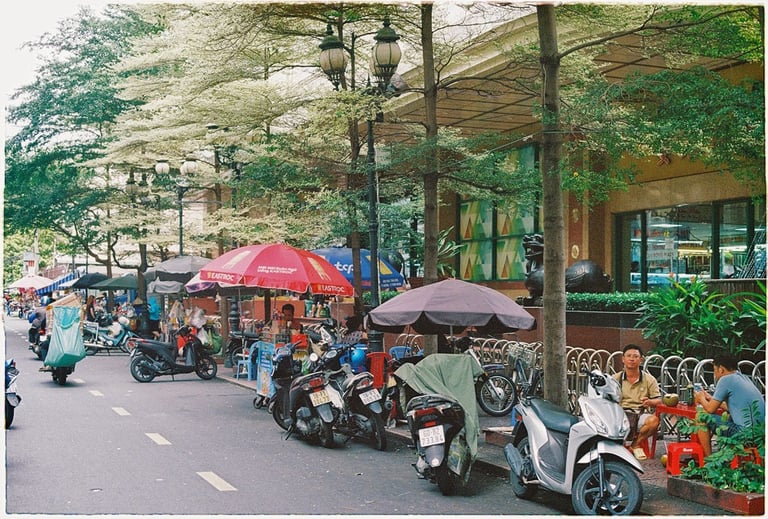


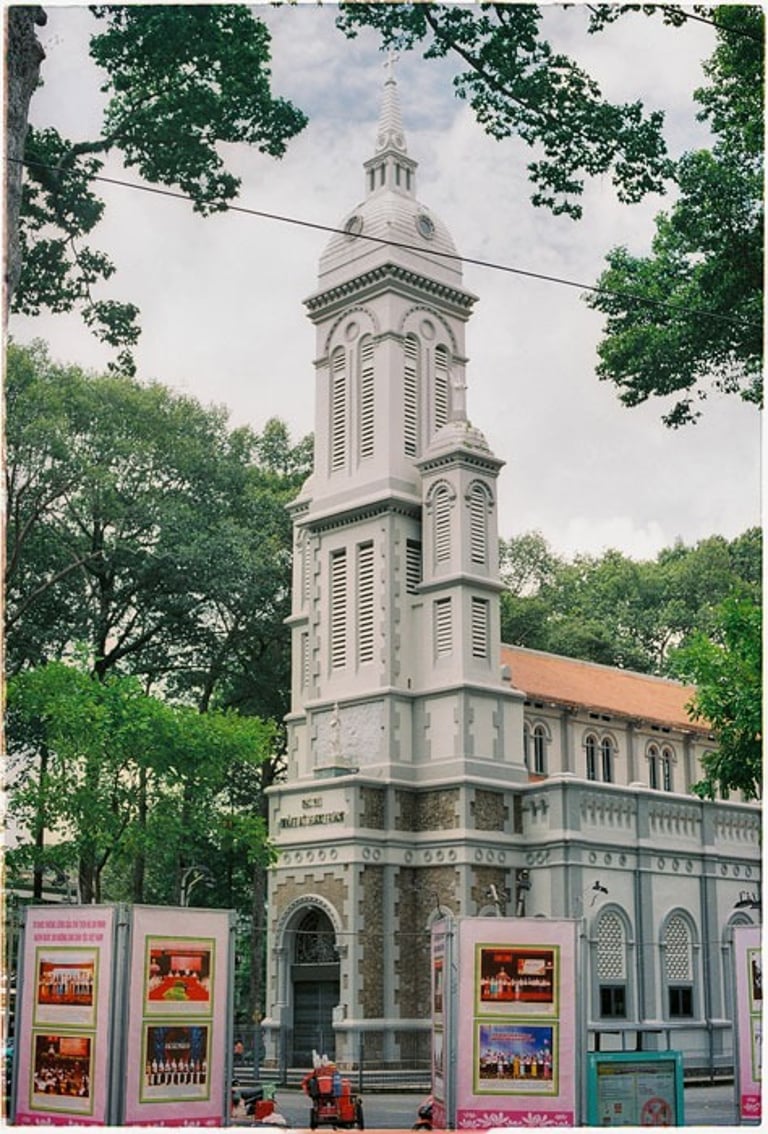
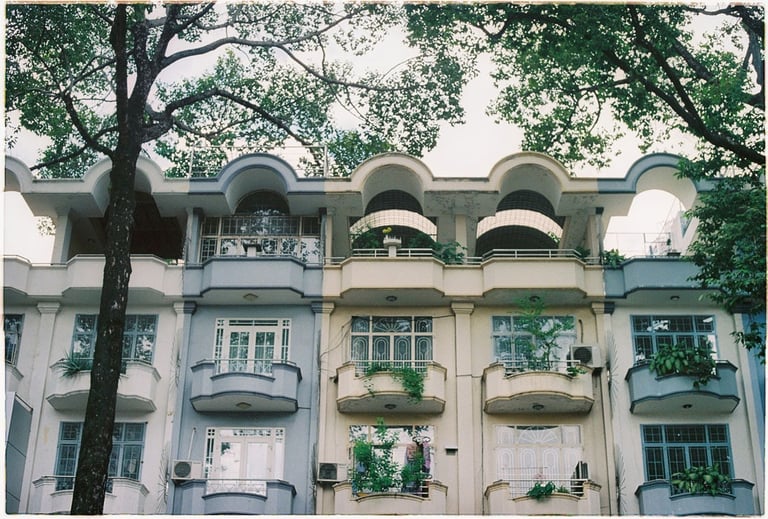
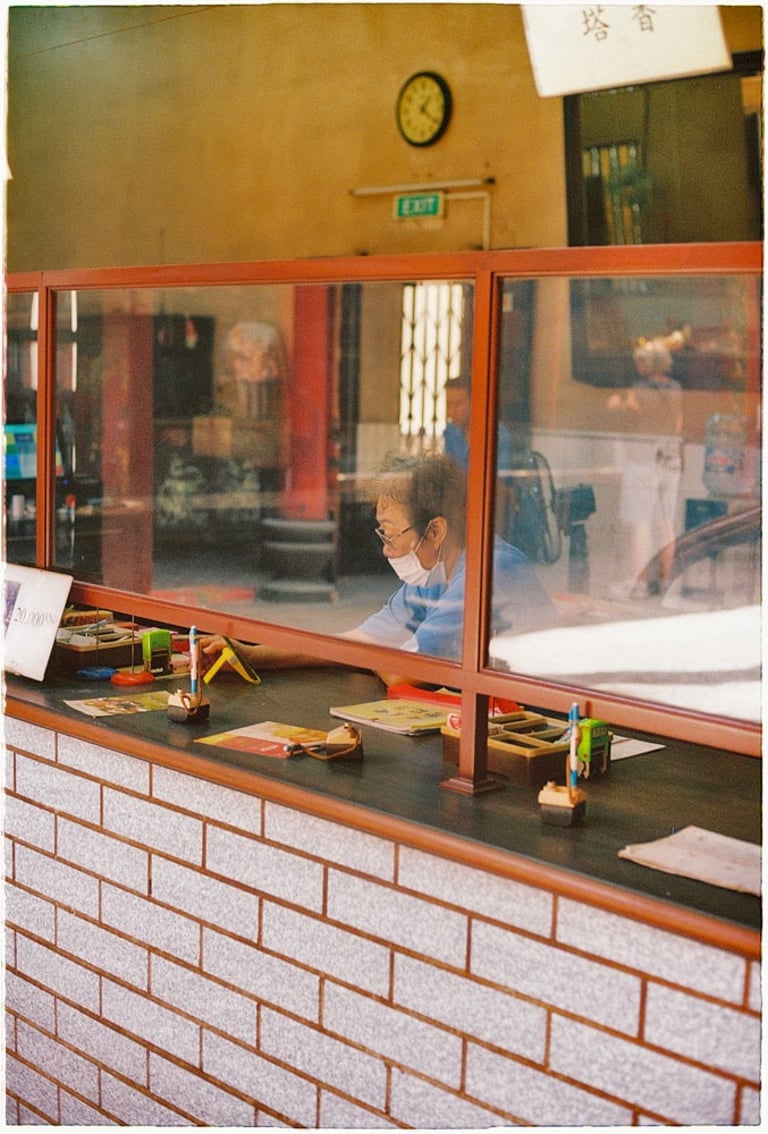






Shops & Markets In Saigon's Chinatown (Chợ Lớn)
Binh Tay Market: A Local's Haven
Nestled in Cho Lon, Vietnam's Chinatown district, Binh Tay Market offers a unique glimpse into local life. Constructed in the 1928, it caters to locals for fresh produce, meats, seafood, and household essentials. Unlike tourist-oriented Ben Thanh Market, Binh Tay Market showcases Vietnam's diverse culinary landscape.
Beyond food, the market offers handicrafts, lacquerware, and textiles. While the selection may not be as extensive as in Hanoi's touristy markets, visitors can find unique souvenirs.
Shops in the Alleys - Chợ Đại Quang Minh
Venture into the narrow alleys between Hải Thượng Lãn Ông and Trần Hưng Đạo B streets to uncover a world of textiles and souvenirs. These alleys are a treasure trove for those looking to find unique fabrics, traditional Chinese decorations, and one-of-a-kind gifts.
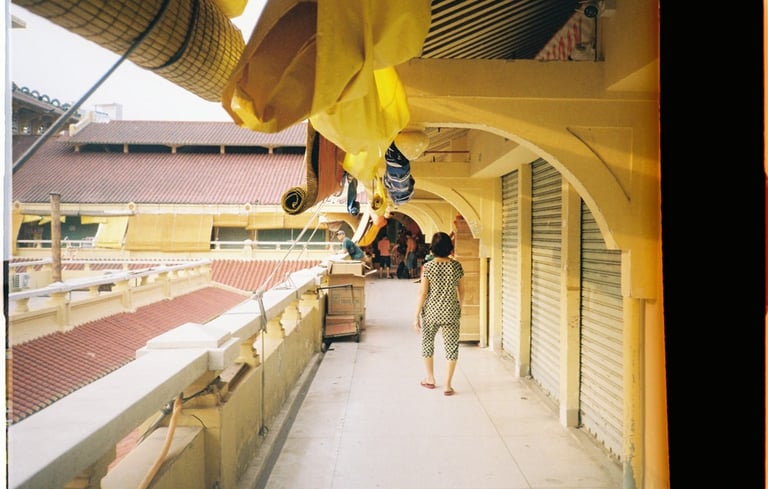

Binh Tay Market: Elegant Heart of Saigon's Chinatown
Where To Eat In Chinatown Saigon:
Dim Sum Delight at Tiến Phát - Điểm tâm Hồng Kông
Start your day with a classic Chinese breakfast at Tiến Phát - Điểm tâm Hồng Kông. This charming dim sum restaurant offers a nostalgic atmosphere and a wide variety of delectable treats. From juicy har gow to savory siu mai, their offerings are sure to satisfy even the most discerning palate. Be prepared to wait for a table, as this popular spot is always bustling with locals and tourists alike.
Hearty Lunch at Quán Ăn Dân Ích
For a satisfying lunch, head to Quán Ăn Dân Ích. This bustling eatery serves up a wide range of Chinese dishes, including hot pot options perfect for sharing with friends and family. Whether you're craving spicy Sichuan cuisine or comforting Cantonese flavors, you'll find something to suit your taste.
Modern Coffee Break at S'mores Saigon
For a refreshing break from all the food, visit S'mores Saigon. This modern coffee shop is housed in a historic building, offering a unique blend of old-world charm and contemporary style. Enjoy a delicious cup of coffee or tea while soaking up the atmosphere. S'mores Saigon is a great spot to stop by during a walking tour of Cho Lon.
Evening Adventures on Sui Cao Street
As the sun sets, Sui Cao Street comes alive with a vibrant night market. This bustling street is lined with stalls offering a variety of delicious street food options. From grilled skewers to noodle soups, there's something to tempt every taste bud. The atmosphere is lively and authentic, and the food is generally safe to eat. Just remember to tip the friendly street vendors to support the local community.
Sweet Treats at Táo Tào Dessert and Food Boutique
End your culinary adventure with a sweet treat at Táo Tào Dessert and Food Boutique (check their Instagram). This charming shop specializes in tofu desserts, offering a variety of flavors and toppings. Their tofu bowls are light, refreshing, and perfect for a satisfying end to your meal.
3 Tours At Saiogn's Chinatown We Recommend To Hop On
Cycling Tour Through Chinatown's Richest Man History
Embark on a captivating journey through Saigon's Chinatown, exploring the life and legacy of Quach Dam, a prominent figure in the area. This cycling tour offers a unique blend of history, culture, and adventure.
As you leisurely pedal through narrow alleys, bustling markets, and historic landmarks, you'll gain a deeper understanding of Quach Dam's humble beginnings and his remarkable rise to wealth. Learn about his contributions to the local community and the lasting impact he's had on Chinatown.
This tour is not just about sightseeing; it's an immersive experience that allows you to connect with the vibrant culture and rich history of this fascinating neighborhood.

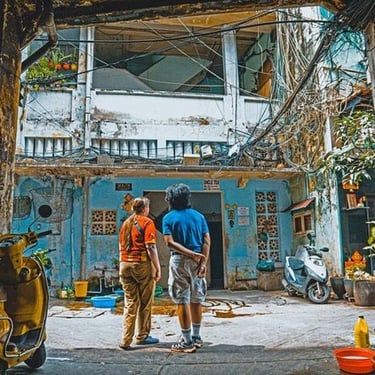

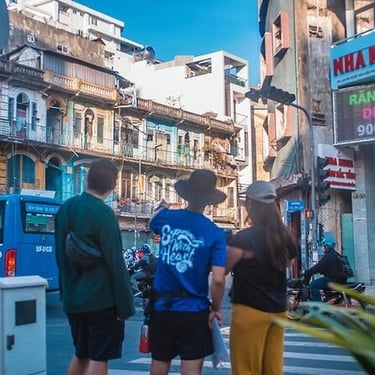
Personalized Journey through Ho Chi Minh City's Chinatown
Experience a captivating journey through Ho Chi Minh City's vibrant Chinatown aboard a traditional cyclo. Explore ancient temples, immerse yourself in local culture, and indulge in delicious street food. Visit the Thien Hau Temple, a testament to the area's rich history. Wander through bustling markets, admire traditional handicrafts, and gain insights into Chinese medicine. This personalized tour offers a unique opportunity to experience the heart and soul of Ho Chi Minh City's Chinatown.


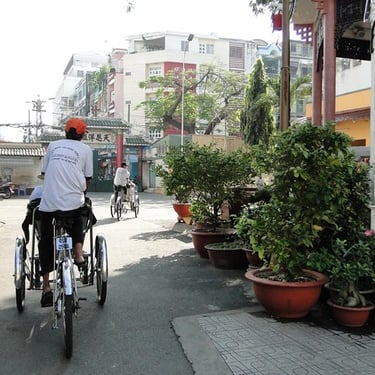
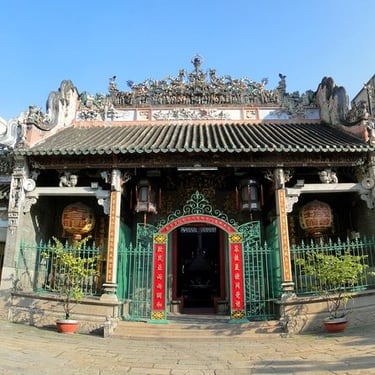
Sunrise Photo Walk Tour of Ho Chi Minh City's Chinatown
If you're a photographer or adventure seeker visiting Ho Chi Minh City, a sunrise photo walk to Chinatown is a must-do experience. This tour offers a unique opportunity to explore the bustling streets of the city's Chinatown at dawn, capturing stunning images of the local people and architecture.
From the vibrant Binh Tay market to the serene Thien Hau Temple, there's something to inspire every photographer. The tour's itinerary is well-planned, providing ample time to explore each location and capture the best shots. The knowledgeable guide offers invaluable tips and insights, ensuring you get the most out of your experience. Whether you're a seasoned pro or just starting out, this tour is a fantastic way to improve your photography skills and create lasting memories.
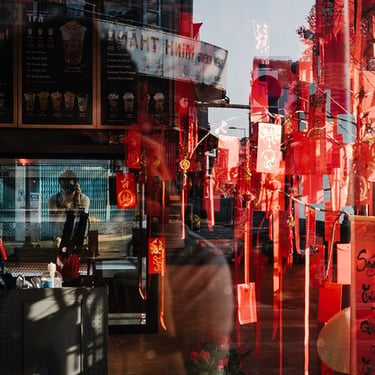
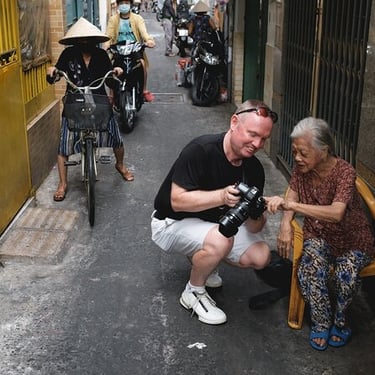
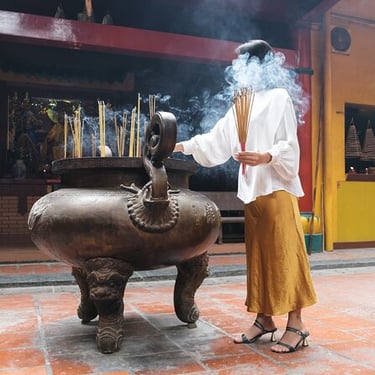

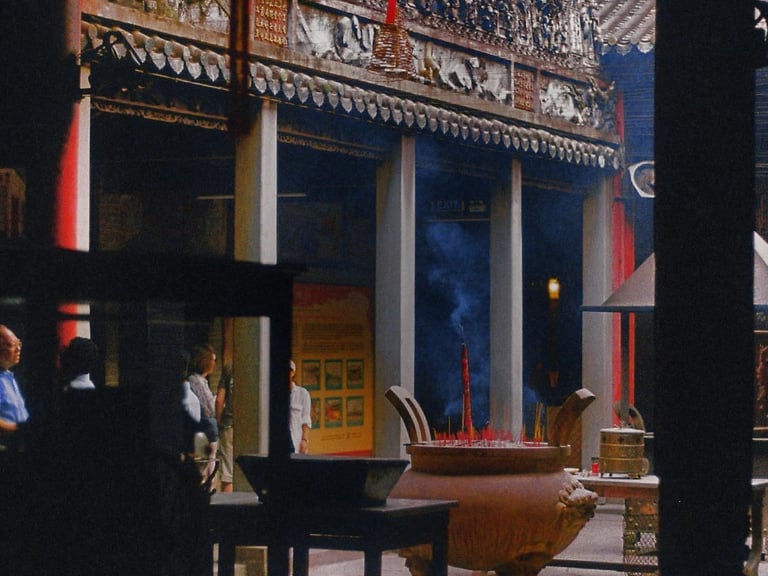

If You Need More Information To Choosing Your Perfect Tour At Chinatown, Read Our Recent Article:
11 Tours In Saigon's Chinatown
Want To Buy Film Camera? Check Phúc Ánh Film Camera Shop in Saigon Chinatown
Nestled within the vibrant heart of Saigon Chinatown, Phúc Ánh Film Camera Shop is a hidden treasure chest that transports you back in time. Even if you're not a photography enthusiast, a visit to this quaint shop is a must-do experience.
Housed in a historic building, the shop's interior is a captivating blend of vintage charm and film photography equipment. The knowledgeable and friendly staff are passionate about their craft and are always ready to assist you in finding the perfect camera.
Whether you're a seasoned photographer or a curious newcomer, you'll be amazed by the diverse collection of film cameras and accessories. Don't forget to follow their Instagram account for the latest updates on their inventory.
A visit to Phúc Ánh Film Camera Shop is a unique opportunity to immerse yourself in the rich history of photography and discover a hidden treasure in the heart of Saigon Chinatown.
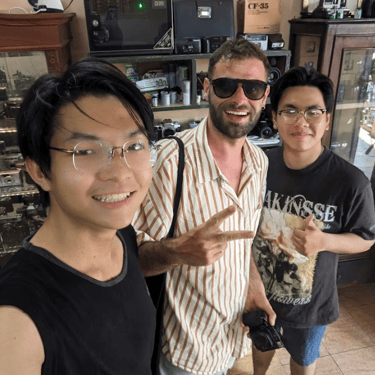


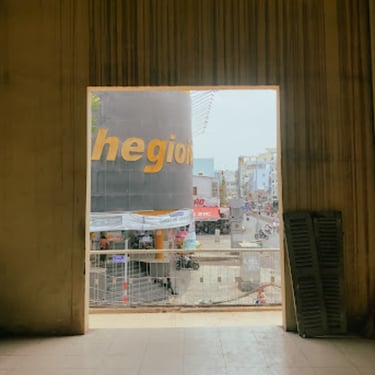
"L'Amant"-Take A Cinematic Stop At Cho Lon
Phu Dinh Street in Ho Chi Minh City's Cho Lon district is a must-visit for fans of the French film "L'Amant." This charming street was the backdrop for many of the film's exterior scenes, and its traditional Chinese shophouses and an atmosphere capture the spirit of the colonial era.
Before or after your visit, watch "L'Amant" to gain a deeper understanding of the film's themes and the historical context of Phu Dinh Street. Then, stroll along the street, soak in the atmosphere, and enjoy a coffee at a local cafe. It's a perfect way to immerse yourself in the cinematic world of "L'Amant."
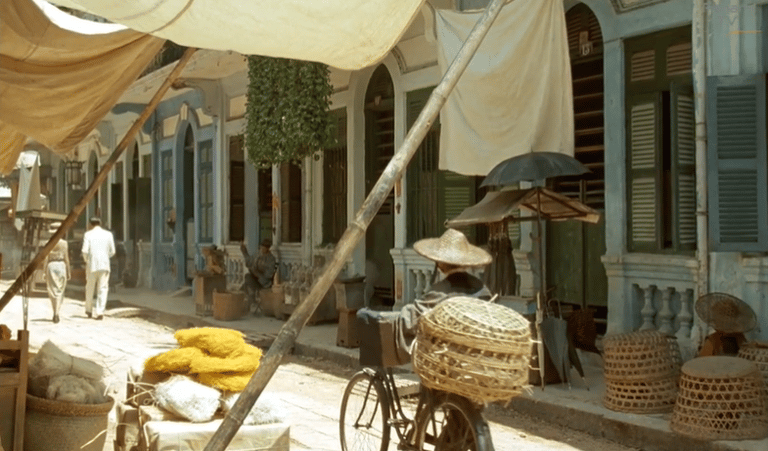
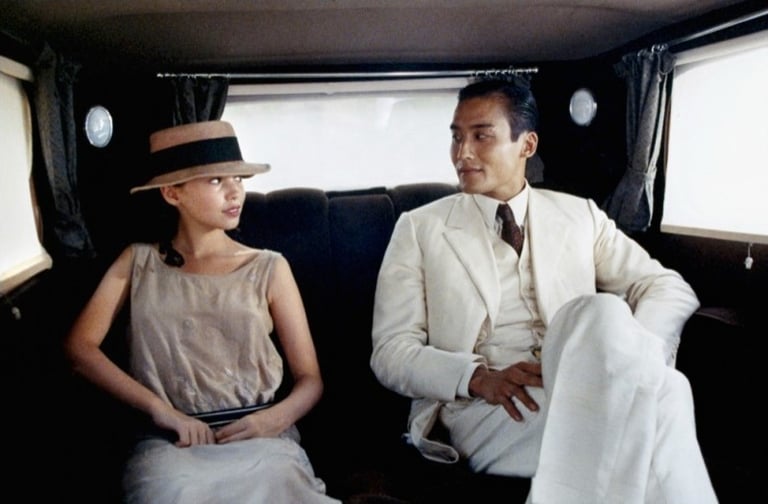




3 Places To Stay In Chinatown Saigon:
For those seeking a classic, opulent experience, the Windsor Plaza is the perfect choice. This iconic hotel, often referred to as the "gatekeeper tower" of Saigon's Chinatown, boasts lavish gold interiors, towering statues of oriental dragons, and a nostalgic charm reminiscent of 90's China. The Windsor Plaza's luxurious amenities, coupled with its prime location, make it an ideal choice for travelers who want to immerse themselves in the vibrant atmosphere of Chinatown.
If you're looking for a modern oasis amidst the bustling streets of District 5, the Equatorial Hotel is a great option. While not technically located within the boundaries of Chinatown, this hotel is still a convenient base for exploring the district and its surrounding areas. The Equatorial Hotel offers a range of continental amenities, ensuring a comfortable and enjoyable stay.
For travelers who appreciate contemporary design and modern conveniences, the Zazz Urban is a stylish choice. This boutique hotel is located next to Windsor Plaza, providing easy access to the district's many attractions. With its comfortable accommodations, stylish decor, and friendly service, the Zazz Urban offers a comfortable and trendy place to stay.
GPSMyCity offers a comprehensive self-guided tour for Vietnam, ideal for independent travelers seeking a structured itinerary and general information about popular attractions. Although it doesn't provide in-depth insights or personalized recommendations, it serves as a valuable starting point for exploring the country. By following the GPSMyCity tour, you can efficiently visit key landmarks and gain a basic understanding of Vietnamese culture and history.
To customize your experience, you can easily adjust the tour's itinerary and add or remove attractions based on your preferences. Whether you're interested in bustling cities, serene landscapes, or historical sites, GPSMyCity's self-guided tour offers a convenient and informative way to explore Vietnam at your own pace. Visit the GPSMyCity website to learn more and start planning your adventure.
Useful Links To Learn More About Saigon's Chinatown
Here are some ways to learn more about Saigon Chinatown:
Instagram:
Explore the vibrant atmosphere of Saigon Chinatown through photos and videos on Instagram. Search for location tags like #SaigonChinatown or #ChợLớn to discover hidden gems and local recommendations.
TripAdvisor:
Get firsthand insights from other travelers who have experienced Saigon Chinatown. Read reviews about the best restaurants, markets, and attractions to plan your visit effectively.
Wikipedia:
Gain a comprehensive understanding of the area's history, culture, and significance. The Wikipedia page for Saigon Chinatown provides detailed information on its architecture, landmarks, and the diverse communities that have shaped its identity over time.
26 Highlights in Ho Chi Minh City’s Chinatown by Jackfuit Adventure
Here some interesting ones: Try Chinese Sausage, Visit Aquarium Street, Try Hai Nam Chicken Rice, Herbal Tea, Do Your Name In Calligraphy
By combining these resources, you can immerse yourself in the rich tapestry of Saigon Chinatown and uncover its unique charm.



